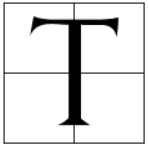A Brief History Of Pens
The story of one of the most underrated inventions of mankind
 The creation of pens has essentially facilitated the basis of our civilization. It is through pens that we could write and communicate information for generations to come. The greatest works of art from writers like Shakespeare or the greatest discoveries in science by Galileo, Newton, or da Vinci would not be common knowledge, if not for the pen.
The creation of pens has essentially facilitated the basis of our civilization. It is through pens that we could write and communicate information for generations to come. The greatest works of art from writers like Shakespeare or the greatest discoveries in science by Galileo, Newton, or da Vinci would not be common knowledge, if not for the pen.
“A pen is the tongue of the mind”
Have you ever wondered how we went from using a quill pen to the very common modern-day ballpoint pens? Let’s take a stroll down the history of one of the most underrated inventions of mankind — a pen.
The Reed Pen — 3000BC
The need for a pen developed as humans discovered papyrus. To write on papyrus and parchment, the Egyptians created the reed pen. They used hollow tubular marsh grass, especially bamboo as the body of the pen.
One end of the tube was sharpened into the shape of a pen’s nib and the tube was filled with writing fluid. The pen would be squeezed to allow the ink to flow out.
The Quill — 6th century AD
After centuries of using the reed pen, the quill pen was created in Seville, Spain. The quill pens were made from bird feathers like swans, turkeys, and geese (the cheaper ones were made out of goose feathers while the expensive one from swans).
The feathers were dried to discard any oils present in them that would interact with the ink. The end of the feather was cut with a knife to sharpen it, making the tip of the pen. The quill could be used by dipping the feather in ink, which would fill up in the shaft as a reservoir. These pens were durable but they had to be sharpened with a knife frequently (commonly known as a penknife).
Before the quill, writing used to be in capital letters. But as the quill improved the smoothness and writing speeds, more decorative and faster means of writing, including lowercase letters were developed. The quill pen would go on to be used for nearly 12 centuries.
The Steel Point Pen — 1822
The quills were replaced when John Mitchell from Birmingham started developing machine-made steel-point pens (or dip pens) on a mass scale. These pens functioned the same way as quills but were much cheaper and sturdier.
Although this was the point in time when steel point pens were first mass-produced, there is archaeological evidence that shows the presence of metal nibs in Ancient Egypt.
The Fountain Pen — 1827
As writing became smoother and faster, constantly dipping the pens in ink got more and more frustrating.
“Necessity is the mother of invention”
“Frustration is the grandmother of invention” — Kevin Shah
This led to the invention of the fountain pen.
The fountain pen was patented by Petrache Poenaru, a Roman inventor in 1827. This pen had an ink barrel and so didn’t need to be dipped in ink regularly. This design, however, was never perfected. It had major flaws in the flow of ink which resulted in occasions when either no ink would flow or too much ink would flow, causing blotting.
In 1884, Lewis Edson Waterman designed and patented the three-channel ink feed fountain pen. It ensured a smooth flow of ink and made pens into a truly transportable tool. The fountain pen underwent many inventions throughout the 20th century, like the use of replaceable and refillable ink cartridges, and the use of plastic, metal, and wood.
The Ballpoint Pen — 1943
Although American inventor John J. Loud patented the earliest design for a ballpoint pen in 1888, he could never perfect the flow of ink for the writer. Decades later Hungarian journalist László Bíró, living in Argentina started working on new designs for the ballpoint pen.
As a journalist, László was too familiar with the annoyance of ink smudging on paper. He decided to use the quick-dry ink and introduced a small metal ball that rotated at the tip of the pen. This managed to keep the ink from drying and also distributing it smoothly. In 1943, László and his brother György, a chemist, patented this new design. These pens, known as biromes were a huge commercial success. The patent for this design was then bought by Marcel Bich in 1945, whose company sold over 100 billion ballpoint pens worldwide.
The ballpoint pen was a turning point in the evolution of pens. It was highly durable, more convenient, could write on multiple surfaces such as cardboard and wood, and even underwater and at high altitudes (where the fountain pen would flood).
Today, with the advent of technology, pens are being replaced by smartphones, tablets, and laptops, and the use of pens is steadily declining. However, pens will go down as one of the most important inventions in the history of mankind.
